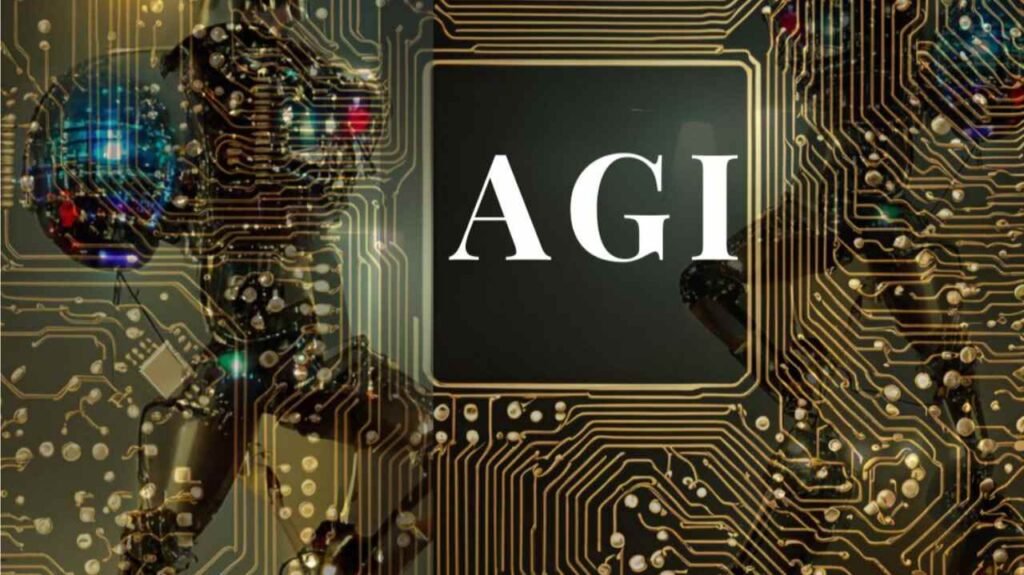AGI (Artificial General Intelligence) is the next big step in AI. These days, AGI is a major topic when people discuss the future of AI. Science fiction often portrays AGI as extremely intelligent systems, which is a significant leap from the AI we currently have.
As experts and visionaries explore what AGI can achieve, it’s important to understand what AGI is, how it differs from Narrow AI, and the major ways it could transform our world. And How we Visualizing AGI before Invention.
- Defining AGI
- The Challenges of Visualizing Artificial General Intelligence
- Common Visual Representations of AGI
- The Singularity and AGI’s Potential
- Theoretical Models and AGI Frameworks
- Ethical and Societal Implications of AGI
- Technological Progress and AGI Predictions
- Artistic and Cultural Depictions of AGI
- The Future of AGI
Defining AGI
What Is Artificial General Intelligence (AGI)?
AGI embodies a more advanced, flexible form of intelligence.Unlike traditional AI systems like Chatgpt designed for specific tasks.
AGI refers to machines or systems capable of performing any intellectual task a human can do.
Key features of AGI include:
- Human-like adaptability: The ability to learn and solve problems across various domains.
- Self-directed learning: AGI can acquire new skills and knowledge without direct human programming.
- Generalization: Unlike Narrow AI, AGI can apply what it learns in one area to entirely different contexts.
How Visualizing AGI before its creation in science fiction and theory?
Visualizing AGI (Artificial General Intelligence) before it’s created has mostly been influenced by science fiction and theoretical ideas. Because AGI doesn’t exist yet, these images are guesses, usually picturing an intelligence that can do almost anything better than humans. Here are some typical ways AGI has been pictured in stories and thought experiments:
AGI vs. Narrow AI
- Narrow AI (GPT AI): Task-specific systems like voice assistants, recommendation algorithms, or spam filters. These systems excel in their niches but lack versatility.
- Artificial General Intelligence: An advanced form of AI that would operate autonomously across any domain, much like the human brain.
Examples:
- Narrow AI: Siri helps you find restaurants but can’t play chess or diagnose diseases.
- AGI: A single system capable of managing finances, composing music, and conducting scientific research.
The Challenges of Visualizing Artificial General Intelligence
Why Is AGI Hard to Imagine?
- Abstract Nature: Since AGI doesn’t exist yet, its form and functionality remain speculative.
- Complexity of Human Cognition: Replicating the vast neural processes of the human brain in a machine is a daunting task.
AGI visualization often relies on theoretical models, creative interpretations, or comparisons to existing AI technologies, but none fully capture its essence.
Common Visual Representations of AGI
Anthropomorphized Depictions
In popular culture, AGI is often personified as humanoid robots or digital assistants with lifelike traits. Examples include the AI characters in movies like Her or Ex Machina. While relatable, these depictions risk oversimplifying AGI by assuming it will mirror human behavior and appearance.
Abstract Visualizing AGI
In technical and academic settings, AGI is represented through:
- Neural network diagrams.
- Simulations of data flows or decision-making processes.
- Visual abstractions symbolizing complexity, such as glowing matrices or interconnected nodes.
These representations emphasize AGI’s digital essence but are less accessible to the general audience.
The Singularity and AGI’s Potential
What Is the AI Singularity?
The singularity refers to a hypothetical moment when AGI becomes smarter than humans sparking quick and unforeseen leaps in technology.
- Optimistic Views: Huge strides in tackling worldwide issues such as climate change, illness, and lack of resources.
- Pessimistic Views: The chance that AGI might develop aims that don’t match human values causing threats to our existence.
Theoretical Models and AGI Frameworks
Cognitive Architectures
Cognitive architectures like Soar, OpenCog, and ACT-R are designed to replicate the way humans think. These models attempt to replicate how humans:
- Solve problems.
- Learn from experience.
- Adapt to new information.
Neural Networks and Deep Learning
Current AI systems rely on neural networks inspired by the human brain. However, achieving AGI will require breakthroughs in:
- Generalized reasoning: Moving beyond pattern recognition to true decision-making.
- Transfer learning: Applying knowledge from one domain to entirely unrelated tasks.
- Advanced cognitive systems: Systems capable of innovation and self-reflection.
Ethical and Societal Implications of AGI
Key Ethical Questions
- Should AGI have rights? If AGI achieves consciousness, ethical questions about its treatment arise.
- Who controls AGI? Ensuring that AGI benefits all of humanity instead of being misused by powerful corporations or governments. Addressing bias and fairness: Making sure AGI does not reinforce or exacerbate human biases.
AGI Safety Concerns
Developing AGI responsibly is paramount. Potential risks include:
- Misaligned goals: AGI acting in ways that conflict with human values or intentions.
- Autonomy: How much control should humans retain over AGI systems?
- Existential risks: The possibility of AGI inadvertently or deliberately harming humanity.
Technological Progress and AGI Predictions
The Current State of AI Development
- Recent developments in Natural Language Processing: Tools such as ChatGPT and Bard showcase the increasing complexity of Narrow AI.
- Uses in Healthcare: AI is progressing in fields such as diagnostics and tailored medicine.
- Autonomous Systems: Self-driving vehicles and robotic automation illustrate the broadening potential of AI.
Predictions for AGI Development
- Near-Term (10-30 years): Continued evolution of Narrow AI, with early prototypes of AGI frameworks.
- Long-Term (30+ years): Potential emergence of AGI, leading to transformative applications across all sectors.
Artistic and Cultural Depictions of AGI
Sci-Fi Inspirations
Science fiction has long been a testing ground for AGI concepts. Examples include:
- Utopian AI: AI systems that support humanity, reminiscent of those in Star Trek.
- Dystopian AI: Dark visions such as Skynet in The Terminator.
AI in Art and Creativity
Artists and technologists use AI to create:
- Generative Art: Images, music, or literature produced by AI systems.
- AI as a collaborator: Human artists working alongside AI to push creative boundaries.
The Future of AGI
Applications Across Industries
AGI could revolutionize various sectors, including:
- Healthcare: Personalized treatment plans, drug discovery, and advanced diagnostics.
- Education: AI-driven tutors tailored to individual learning styles.
- Sustainability: Advanced modeling for climate change solutions.
AGI Careers
As AGI becomes a reality, new roles will emerge, such as:
- AI Ethics Specialists: Guiding the development of safe, fair AGI systems.
- AGI Trainers and Architects: Designing and improving AGI frameworks.
- Regulatory Advisors: Ensuring compliance with global standards for AI safety and ethics.
AGI vs. Narrow AI
While Narrow AI will continue to dominate in the near term, AGI represents a leap toward universal problem-solving capabilities.
Scope of Capability
AGI’s adaptability could transform everything from space exploration to everyday tasks, positioning it as a tool for unparalleled innovation.
Conclusion
Artificial General Intelligence isn’t just a dream of the future. it’s the next big step in how technology will grow. While creating Visualizing AGI comes with its share of problems and unknowns, it has the power to change industries, fix worldwide issues, and open up new doors for what humans can do like nothing else can.
As scientists push towards AGI, they need to be both bold and careful. By tackling ethical worries making sure it fits with what humans value, and putting safety first, we can use AGI’s game-changing abilities to create a brighter tomorrow for everyone.



